Spring Pasta with Peas and Asparagus
This green pasta dish is bursting with spring flavors, including peas, asparagus and fresh herbs. Lemon, pine nuts and parmesan send it over the top!
Updated by Kathryne Taylor on April 15, 2025
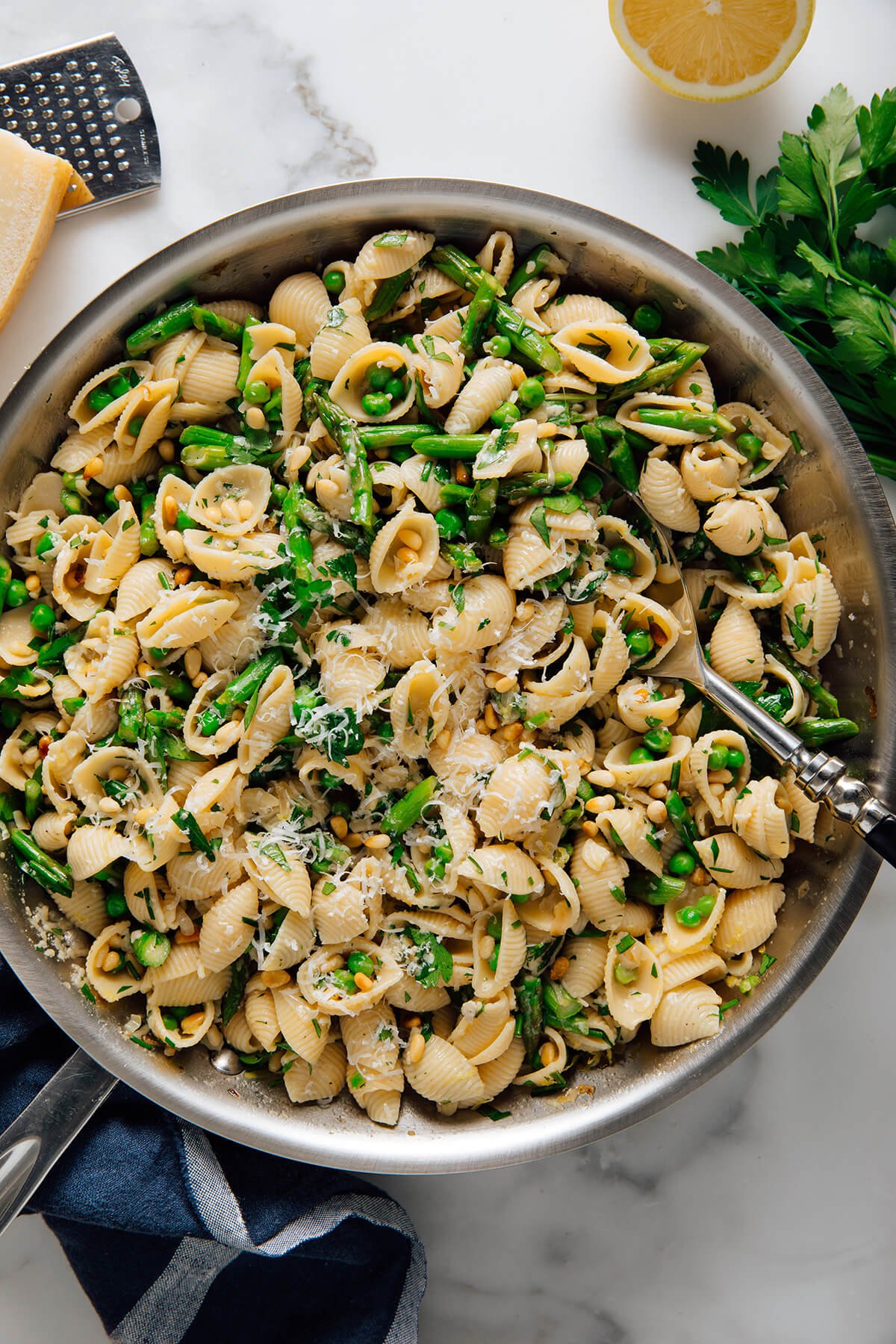
This beautiful pasta recipe is designed for springtime produce: asparagus, peas, shallots and fresh herbs. It offers gorgeous green hues, and irresistible flavor courtesy of lemon, butter and Parmesan. This dish is a longtime favorite from one of the most comprehensive cookbooks in my collection, Aida Mollenkamp’s Keys to the Kitchen.
Be warned that this recipe requires some serious chopping work, but the end result is worth the effort (for a simpler recipe, try this pesto pasta with peas). The recipe yields a lot of food, enough for six to eight servings, so it may be best created with helpers and shared with a small crowd. Otherwise, it reheats well for leftovers.
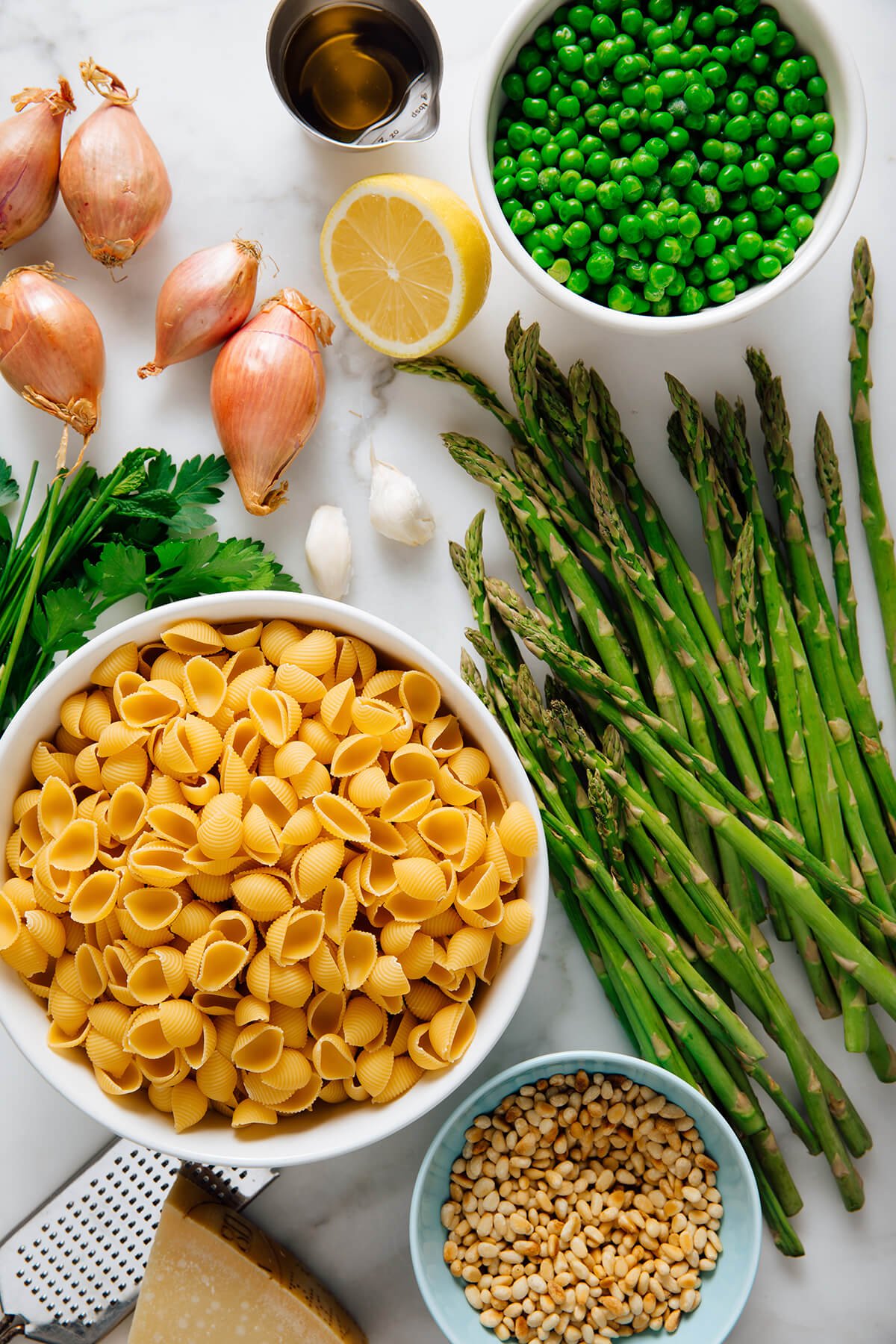
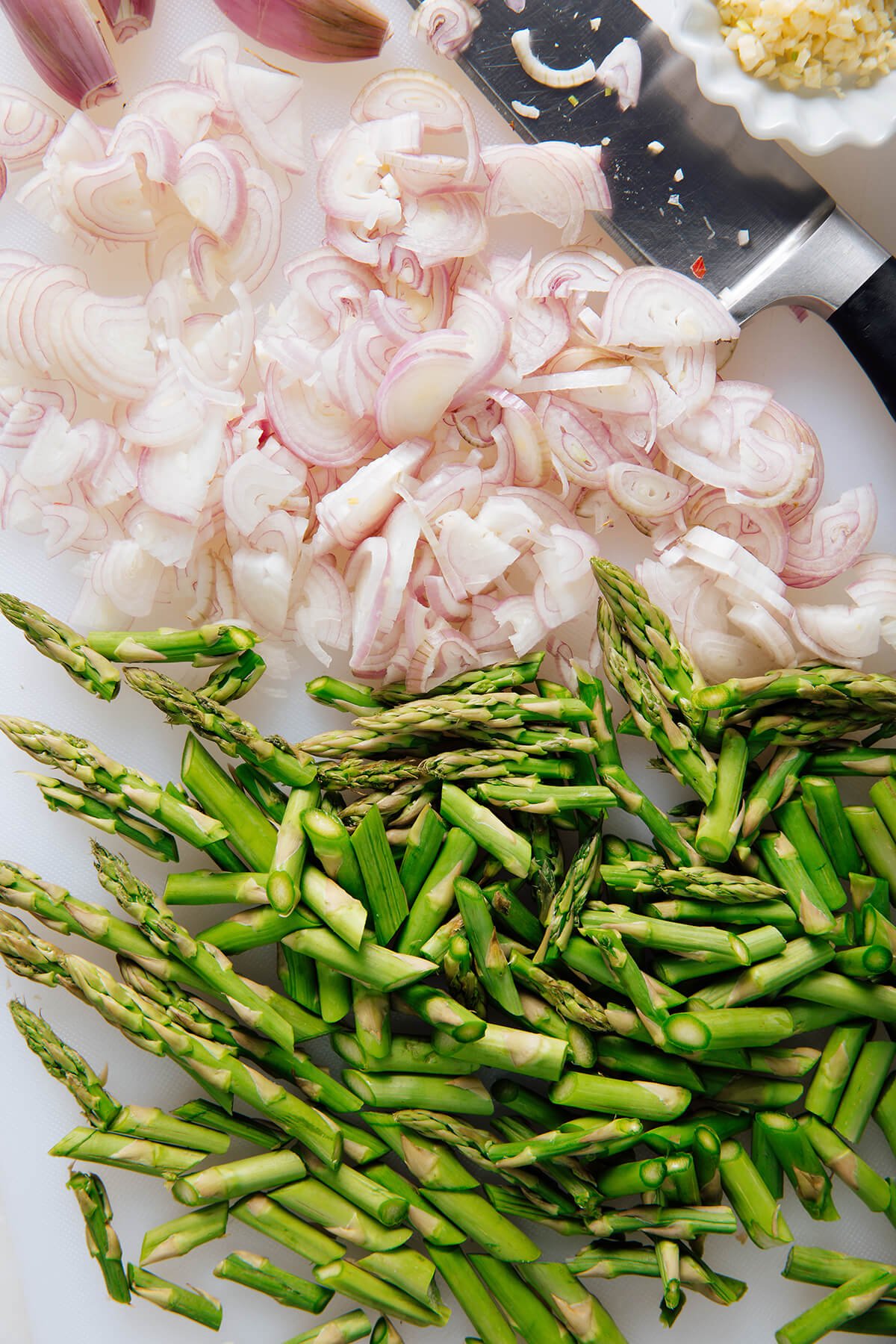
Pasta Tips
You’ll find the full recipe below. Here are a few notes for best results:
Salt your pasta cooking water.
Your pasta water should taste salty! The pasta won’t absorb all of that salt, but the salt that it does absorb yields much more flavorful end results. You simply can’t add enough salt at the end of cooking to make up for it.
You’ll reserve some of the starchy pasta cooking water to help the sauce cling to the pasta. I like to use a glass liquid measuring cup to scoop some out before draining the water, so I don’t forget.
Keep an eye on your pine nuts.
Toasting the pine nut brings out their best savory flavors. They burn quickly, so stir constantly and don’t step away from the stove while they’re cooking.
Frozen peas are fine.
Fresh peas can be hard to find, and frozen peas taste just as good. Defrost them in a sieve under cool running water before using.
Use thin asparagus.
The cooking time provided below is for pencil-thin asparagus, which is available earlier in asparagus season. If you must, you could slice thicker asparagus into thinner segments.
Choose your own herbs.
You can use flat-leaf Italian parsley, mint, chives, chervil or tarragon. You could use all parsley or mint, or a combination of herbs. If using chives, chervil or tarragon, use a smaller amount of those herbs and fill in the rest with parsley or mint.
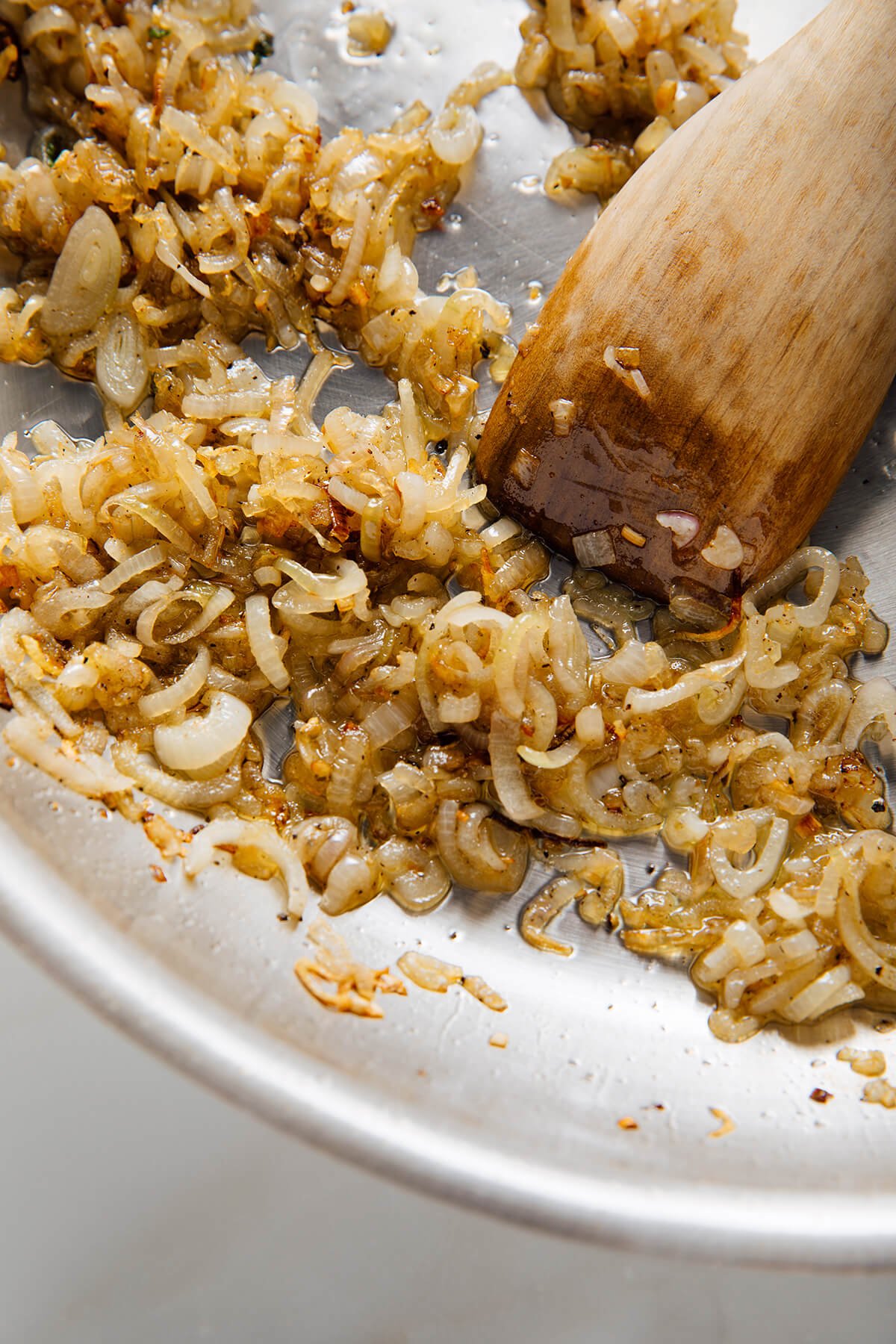
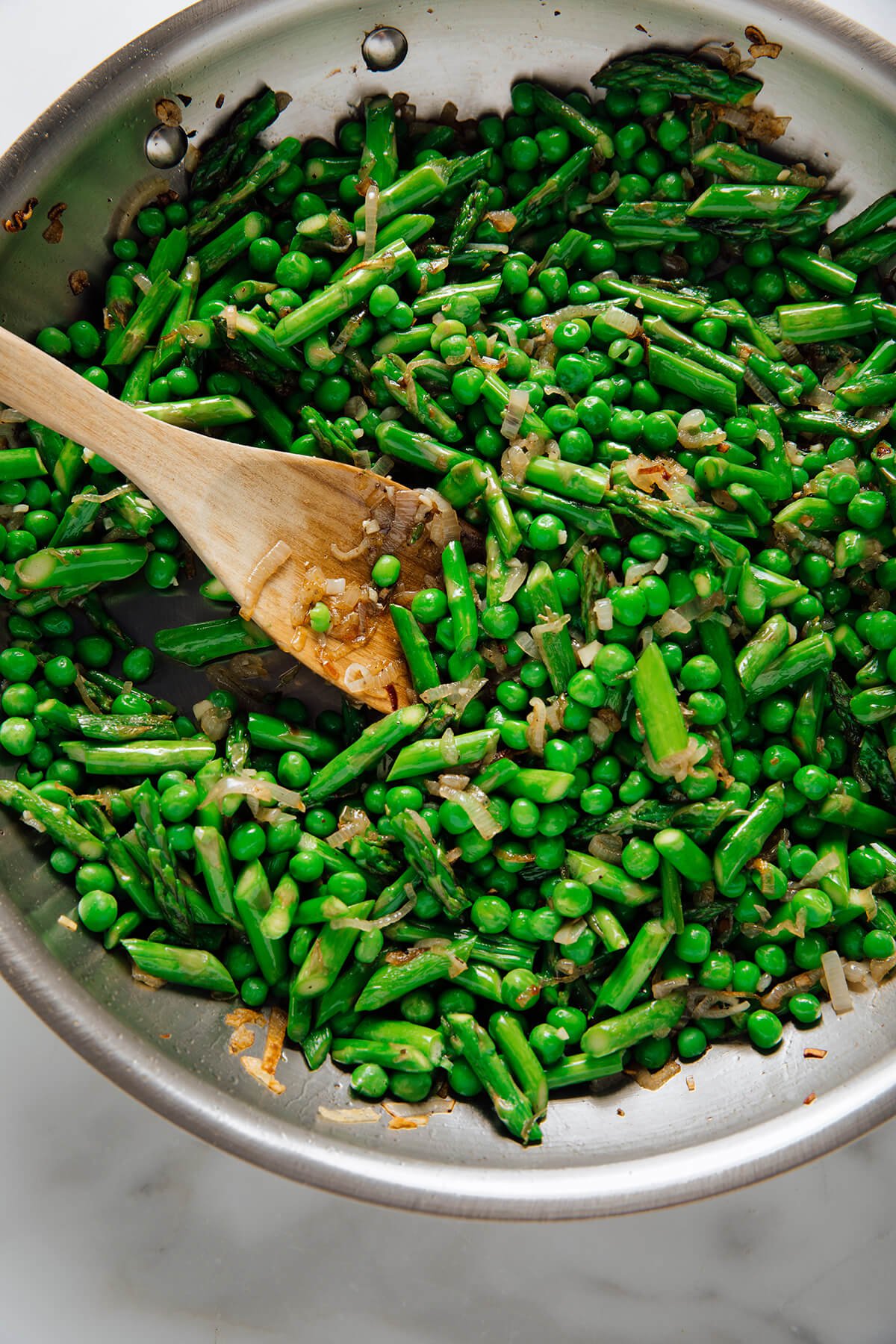
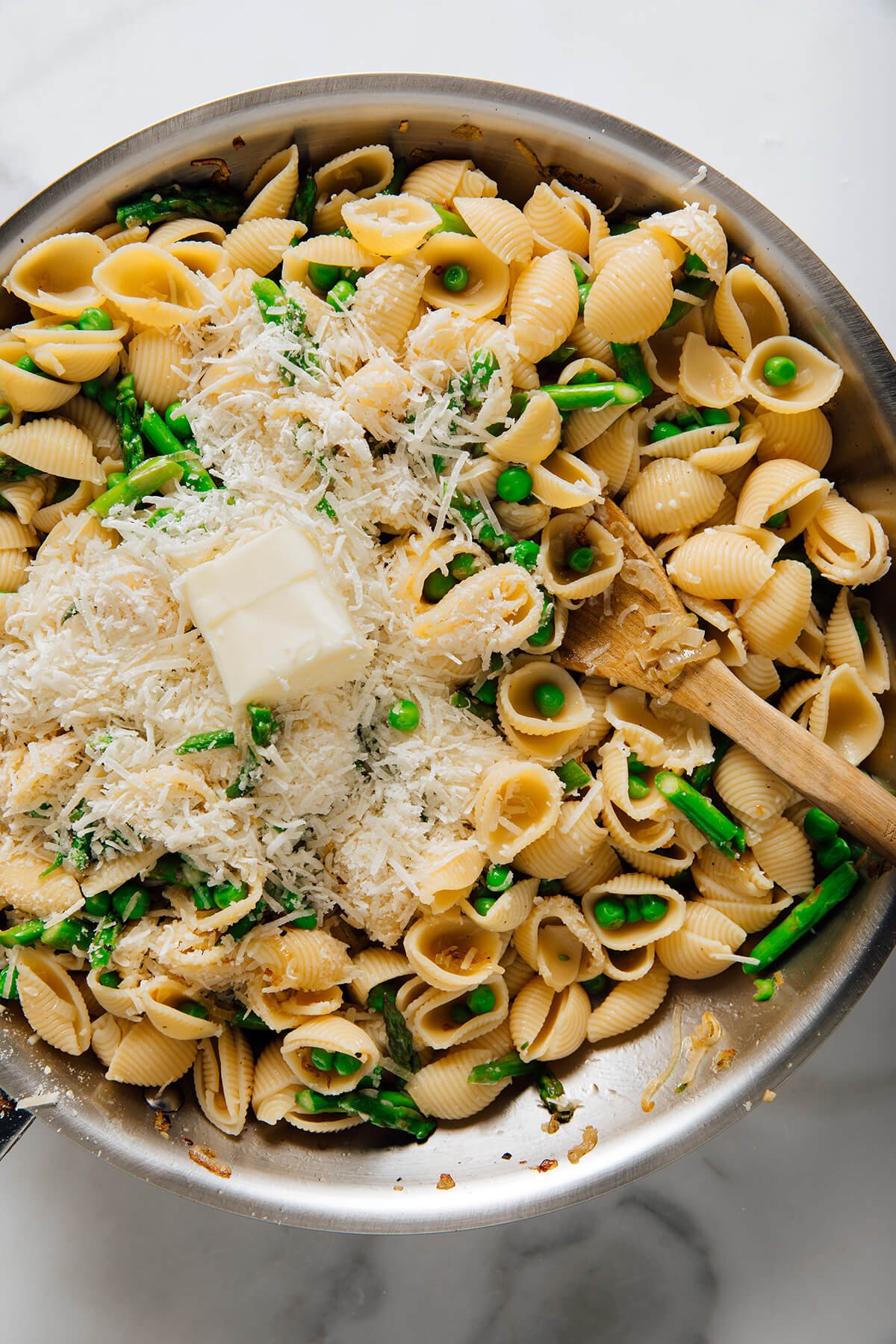
More Springtime Pasta Recipes
Check out these vibrant pasta recipes featuring fresh green spring produce:
- Arugula Pesto
- Broccoli Pesto Pasta with Green Olives
- Gaby’s Pasta with Peas and Pesto
- Green Goddess Tortellini Salad
- Lemony Green Pasta with Peas & Ricotta
- Spinach Lasagna
Please let me know how your pasta turns out in the comments! I love hearing from you.

Spring Pea and Asparagus Pasta
This very green pasta dish is bursting with spring flavors, including peas, asparagus and fresh herbs. Once you have prepped your vegetables, the dish comes together rather quickly. This recipe yields a lot (enough for 6 to 8 servings) so feel free to halve it if you are serving two.
Ingredients
- 1 pound (16 ounces) pasta (conchiglie, orecchiette, shells, fusilli or linguine—whole grain if desired)
- ¾ cup pine nuts
- ¼ cup olive oil, plus more for garnish
- 5 shallots, quartered lengthwise and sliced very thin crosswise
- 1 pound pencil-thin asparagus, woody ends snapped off, and cut in ½-inch slices on the bias
- 2 garlic cloves, minced
- 2 cups shelled fresh or frozen English peas (defrost peas if frozen)
- ⅔ cup grated Parmigiano-Reggiano cheese (or regular Parmesan), plus more for garnish
- 2 tablespoons unsalted butter
- 2 teaspoons grated lemon zest (from one lemon)
- 1 tablespoon lemon juice (less than one lemon)
- 1 cup roughly chopped mixed herbs (I used flat-leaf Italian parsley, chives and mint, other suggestions include chervil and tarragon)
- Fine salt, to taste
- Freshly ground black pepper, to taste
- Pinch of red pepper flakes (optional)
Instructions
- First, prep your vegetables. Then, bring a large pot of heavily salted water (it should taste salty) to a boil over high heat. Cook the pasta for two minutes less than the package directions. Reserve 2 cups of the pasta water, then drain the pasta.
- While the pasta cooks, warm the pine nuts in a large skillet over medium heat, stirring frequently (do not step away from the stove, as they burn quickly). Cook until they turn lightly golden on the edges, about 3 to 5 minutes. Transfer them to a bowl to cool, then return the skillet to the stove.
- Warm the olive oil in the skillet over medium-high until shimmering, then add the shallots, season with a pinch of salt and several twists of pepper, and cook until golden brown (about 5 minutes).
- Add the asparagus and garlic, season with another pinch of salt, and cook until the asparagus is knife-tender and bright green (about 3 minutes). Stir in the peas and cook until the peas are bright green (about 2 minutes).
- Add the drained pasta to the pan and 1 cup of the reserved pasta water. Stir and cook until the sauce starts to coat the pasta (about 2 minutes). Remove the pan from heat and transfer the contents to a large serving bowl. Add the cheese and butter and stir to coat. (Add more splashes of pasta water if needed. The sauce should cling to the pasta.)
- Stir in the lemon zest, lemon juice, herbs and pine nuts. Taste and adjust seasonings as required (add a pinch of salt, red pepper flakes and/or a squeeze of lemon juice if desired). Grate some cheese over the top and garnish with freshly ground black pepper and a drizzle of olive oil. Serve immediately. Leftovers will keep well for up to 4 days covered in the refrigerated.
Notes
Minimally adapted from Keys to the Kitchen: The Essential Reference for Becoming a More Accomplished, Adventurous Cook by Aida Mollenkamp.
Nutrition
The information shown is an estimate provided by an online nutrition calculator. It should not be considered a substitute for a professional nutritionist’s advice. See our full nutrition disclosure here.



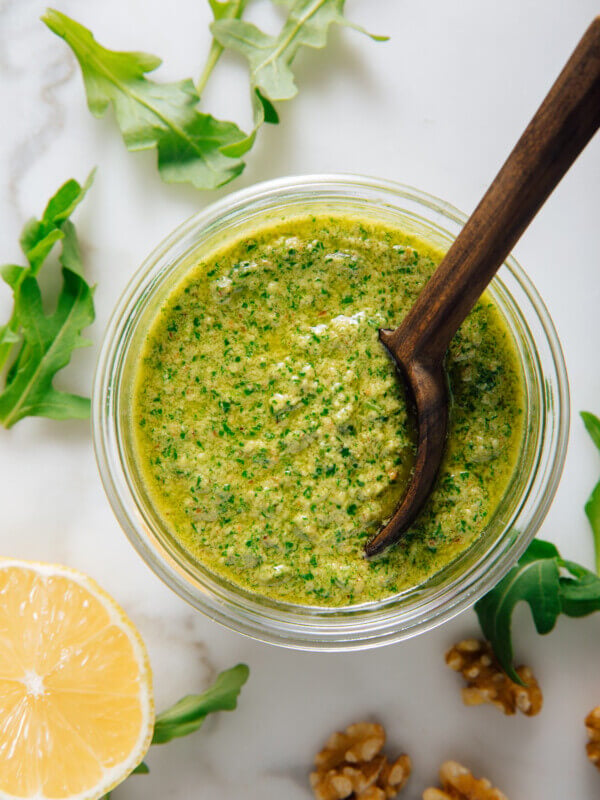
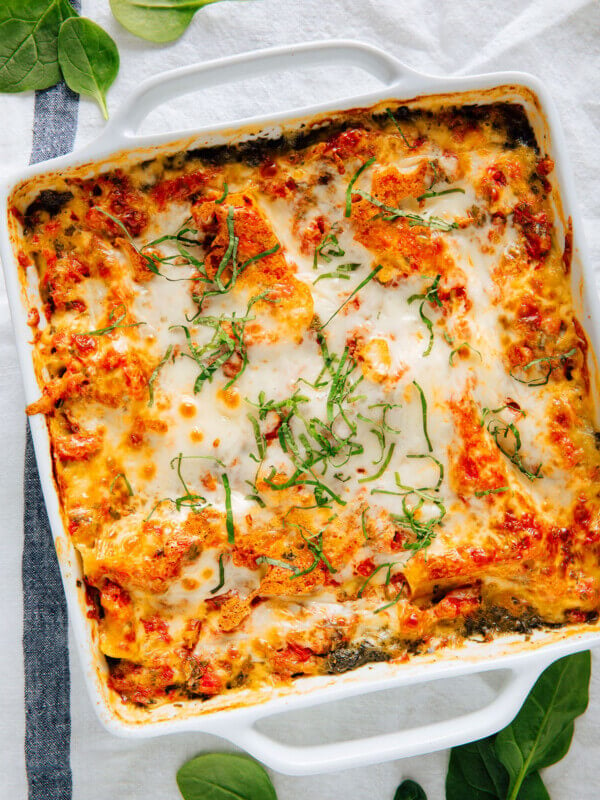
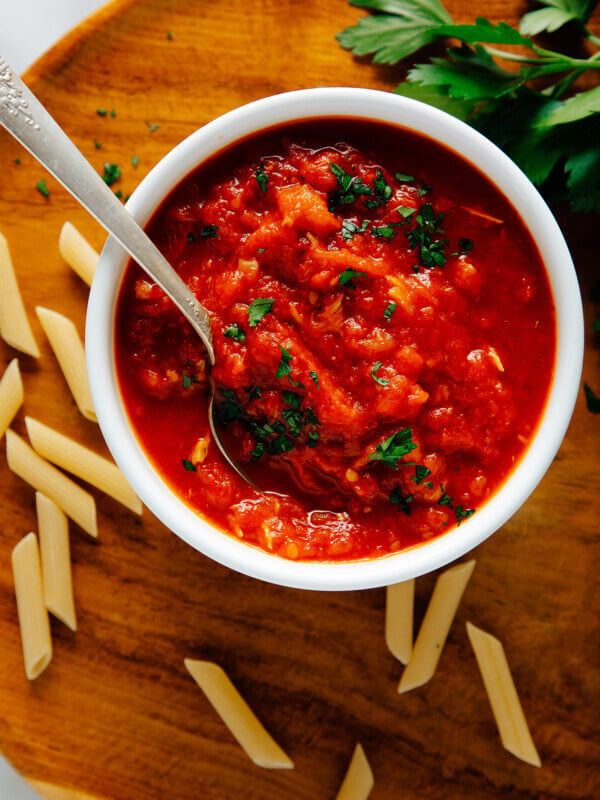








Hands down one of my favorite dishes. I’ve made it three times since I discovered it 2 months ago. I don’t always measure out and prep all the ingredients for everything I cook before I start cooking, but I do with this because a lot seems to happen at once and it just makes it easier. I also omit the pine nuts as they are very expensive and I don’t really like them that much.
So good!